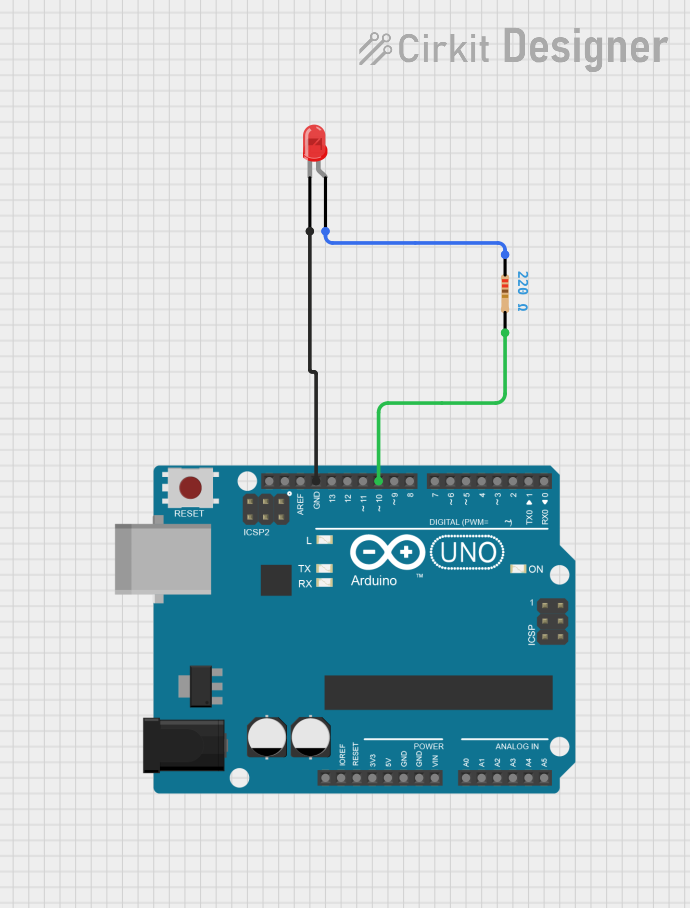
Cirkit Designer
Your all-in-one circuit design IDE
Home /
Project Documentation
Arduino UNO Controlled LED Blinker

Circuit Documentation
Summary of the Circuit
This circuit consists of an Arduino UNO microcontroller, a red two-pin LED, and a resistor. The purpose of the circuit is to control the LED using one of the digital pins of the Arduino UNO. The LED is connected to the Arduino through a resistor to limit the current and prevent damage to the LED. The ground of the LED is connected to the ground of the Arduino to complete the circuit.
Component List
Arduino UNO
- Description: A microcontroller board based on the ATmega328P.
- Pins Used: GND, D10
- Purpose: Acts as the main controller for the circuit, providing a digital output to control the LED.
LED: Two Pin (red)
- Description: A basic red light-emitting diode.
- Pins: cathode (negative), anode (positive)
- Purpose: Emits light when powered.
Resistor
- Description: A passive two-terminal electrical component that implements electrical resistance as a circuit element.
- Resistance: 220 Ohms
- Purpose: Limits the current flowing through the LED to prevent it from burning out.
Wiring Details
Arduino UNO
- GND is connected to the cathode of the LED.
- D10 is connected to pin 2 of the Resistor.
LED: Two Pin (red)
- Cathode is connected to the GND of the Arduino UNO.
- Anode is connected to pin 1 of the Resistor.
Resistor
- Pin 1 is connected to the anode of the LED.
- Pin 2 is connected to the D10 of the Arduino UNO.
Documented Code
Arduino UNO Code (sketch.ino)
void setup() {
// put your setup code here, to run once:
}
void loop() {
// put your main code here, to run repeatedly:
}
Note: The provided code is a template and does not include specific instructions to control the LED. To control the LED, the digital pin D10 should be set as an output in the setup() function and then toggled or set to HIGH/LOW in the loop() function as desired.